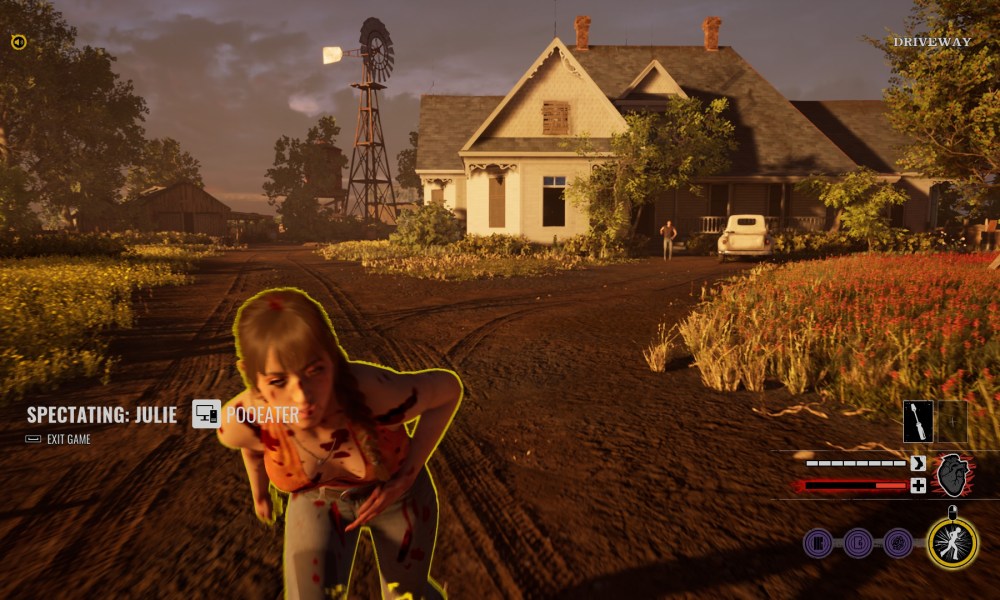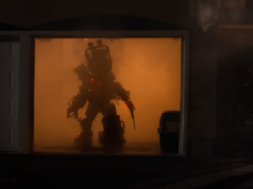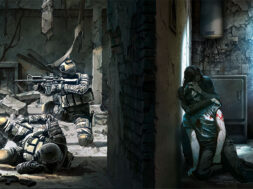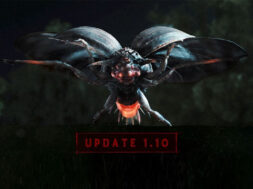
Gun Interactive’s The Texas Chain Saw Massacre is a celebration of its namesake’s franchise in more ways than one. For starters, eagle eyed fans will have noticed that its upcoming release date, August 18th, is the 50th anniversary of the events that take place in its inaugural film. You don’t need me to tell you the extent of Texas’ impact on the slasher genre and horror as a whole since then–its slew of sequels, the prominence of Leatherface, the entire population of chainsaw wielding scare actors in haunted attractions–speaks for itself. With that being said, Gun had big shoes to fill. But play one match of The Texas Chain Saw Massacre and it’s plain to see: Gun was up to the task of doing the franchise justice in a fresh, unique way.
The Texas Chain Saw Massacre is Gun’s second asymmetrical horror title based on popular horror IP, after Friday the 13th: The Game, which was not only a hit, but one of the earlier games to capitalize on the trend of asymmetrical horror. For those unfamiliar, asymmetrical horror is a gameplay format that pits two teams up against each other, usually in some type of “victim” against “killer” format. While there’s been experimentation with the genre more recently, the typical dichotomy is that there’s one team that needs to utilize scarce resources to try and escape a match, while the other team tries to hunt them down (through deadly measures) and stop them from escaping.
Rather than just neatly fitting into the typical format of asymmetrical horror, Texas shakes it up dramatically – each match is comprised of seven players, with four taking on the role of “victims” and three taking on the role of the “family.” The cast is made up of both new and familiar faces: the fresh group of victims are a rag-tag group of young adults led by Ana Flores in search of her missing sister, Maria. The family, in addition to a couple new siblings, is where you’ll find familiar characters like The Cook, The Hitchhiker, and of course, Leatherface. The entire roster is equipped with unique stats and abilities, offering players the ability to reconfigure and find their favorite flavor of gameplay.
As I jumped into my initial matches, experimenting with both the victim team and the family team, it immediately became apparent to me not only how faithful that Gun had been to the source material, but how seamless the material seemed to matriculate into an asymmetrical horror setting. For the victims, there’s a clear progression that needs to be undertaken each match: you start out locked up in the basement, you need to find your way upstairs without being slaughtered by the lurking Leatherface, and then there’s a handful of escape options available to you. But that path always seems to be different every match: sometimes, I was able to make it out of the basement in less than a minute, and other times, I was relentlessly chased and mangled by Leatherface before barely making it out alive.
Similarly, on the Family side, the character you select will vastly dictate what your objectives are. If you’re Leatherface (who, naturally, is a required character for each match), expect to take on the role of the chaser, the one who keeps everyone on the map scrambling with the rev of your chainsaw, and typically the executioner. But if you choose someone like the new character, Sissy, you have the ability to maneuver the map in quieter, tactful ways, and even lay down traps as a saboteur that disrupts key objectives from being completed.
The myriad of gameplay options offered by both teams keeps the gameplay fresh, and it’s further augmented by an intricate skill tree and progression system that I viscerally found akin to, of all games, that of Final Fantasy X. Additional skills, stat boosters, and level ups are achieved via experience gained from each match, and you select each from different branching progression paths on a large skill tree. Sometimes you need to be strategic, as selecting one branch of perks will lock you out from any other branches. Perks can be both active and passive – for example, on the victims side, certain perks will highlight escape routes for a duration of time if you find key items, whereas others will allow you to stun members of the Family.
The skill tree and level up system really stoked my excitement for the game as a hardcore asymmetrical horror player: I’m excited to seek out the best perks and refine my style of gameplay. I wasn’t surprised to see that fellow Victims were clamoring to play as Connie, who has a perk that allows her to instantly unlock doors once every couple minutes. I’m already anticipating that players will identify the best characters/perks, the devs will become privy to that, and then implement updates down the line that will refine the system.
On that note, however, I do get the impression that Texas may be more inclined towards hardcore players than casual players. For both teams, there definitely appears to be a learning curve to fully take advantage of what each match has to offer. If you’re playing as a victim against even slightly experienced team of family members, it’s not surprising that you find yourself in corpse mode in less than 5 minutes. And on the flip side, adept victims against a family that’s still trying to find its footing can end up running through the escape gates in 2-3 minutes. For the casual player not very accustomed to asymmetrical horror, it may not be the most forgiving game to get a handle on the genre.
Naturally, with any asymmetrical horror game, Texas will surely need some balance updates in the future. At the moment, I’d say matches seem a bit in favor of the Family. As a victim, even during my most calculated and stealthy moments, if I found myself ganged up on for even just a second, it was typically a wrap for me without much option for escape.
In spite of that, the chases are intense and genuinely frightening. With other asymmetrical horror games, the thrill of the chase becomes a bit diminished over time, but with Texas’ close gritty and dark corners and countless escape options, I find myself always trying to balance strategic and visceral decisions. It’s not as simple as running in circles – you need to crawl, shimmy, sometimes gambit making loud noises that give away your position in exchange for a quick getaway, and all of it feels not only like a success of asymmetrical horror, but an homage to the feeling I get when I watch a Texas film. I can’t say that I’m surprised either – Gun has proven in the past that it has a pulse on how to evolve this niche genre in ways that other games can’t while doing justice to its source material. If you’re interested in the future of asymmetrical horror, picking The Texas Chain Saw Massacre up is a necessity.
The Texas Chain Saw Massacre will be available on most modern systems, and include cross-play on day one, on August 18th, 2023.

















